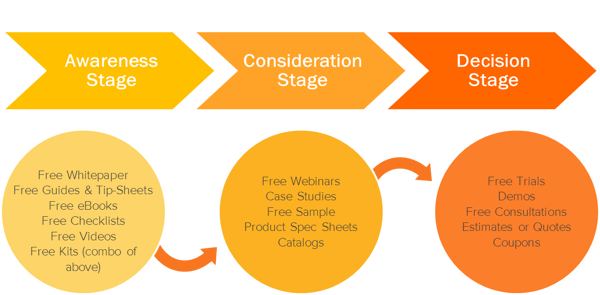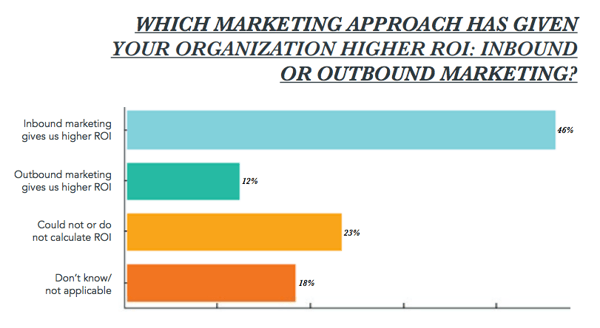Learn More About:
Inbound Marketing Services
When implementing any new marketing strategy, you need to know that it is going to do its job. The overall goal of marketing is always to build your company brand, increase incoming leads, which will help grow your sales and increase your profits. Inbound marketing is a strategy being used by more and more businesses, and for a good reason - it works. Read on to learn more about inbound marketing and why it's so effective at helping you achieve your business's goals.
The idea behind inbound marketing is pretty simple - provide consumers with valuable and insightful content. Thus, they'll find the content helpful and your brand trustworthy, and they'll be attracted to the products and services you offer. Today's consumers are looking for answers to their most pressing questions and solutions to their most troublesome problems, and they do so by searching for information online. So, the trick is to know what they're looking for before they do, and have their answers and solutions ready to go within the content of your site.
An important detail about the type of content marketers should provide is highlighted in the following graphic.

Helpful and educational information is called Awareness Stage content, which can take a variety of forms. But what it is not is an advertisement for your company. In fact, it has very little of your company content on it. The benefit your business gains by providing it is trust and goodwill, and potentially an email and name for the visitor because they downloaded an educational piece of content. Later, when they are curious about learning about your business, they will consume Consideration Stage content. This is informative content that is branded. This means it describes your abilities to address a need and how you do it without becoming a sales pitch. Lastly, if the user learns enough about your business AND they are ready to engage with your business, they will be classified as being in the Decision Stage of their journey for information.
Why describe these three stages? Because marketers must create content in each stage without mixing material between stages for it to be impactful on the reader and implement Inbound Marketing properly. If you are not sure if you are creating content correctly, then consider seeking the advice of a content strategist.
Traditional marketing was often intrusive, annoying, and in-your-face, pressuring customers to buy things that they didn't really need. Today, the power is back in the hands of the customer. With the internet at their fingertips, they can do their own research and make more informed decisions about what products to buy.
With that knowledge, it's easy to see why inbound marketing is so useful. If consumers are using the internet to research products to make purchasing decisions, it's smart to offer them the information they're looking for in an interesting and entertaining package. Brand your content consistently, show people what sets you apart from your competition, and take steps to form more meaningful bonds with potential customers. Then, when they're ready to make a purchase, they'll come to you first.
Inbound marketing can include a variety of channels, like your blog, your website, social media, and email. But no matter what platform you're using, your aim should be to help and inform potential customers, and continue the conversation and relationship even after they buy from you. This is how inbound marketing helps you create fans for life.
When looking at an overview of inbound marketing, it makes sense. Customers want the power to make their own decisions and inbound marketing tailors to that desire. But does it really work? With more than three-quarters of inbound organizations agreeing that their strategy is effective, the clear answer is yes, inbound marketing works quite well. Here are some more statistics to illustrate this point:
 Why Inbound Marketing Works
Why Inbound Marketing WorksWith the stats to back it up, it's easy to see that inbound marketing works, but what makes it so effective? We already know a little bit about how inbound marketing meets the users needs, but it's important to think about the process a person goes through when they're looking to make a purchase. First, they realize they have a problem, then they do research about how to solve it by searching online. From there, they look into products that may help them, and then they may do more research about the brands offering these products. Finally, armed with all of this knowledge, they are ready to make a purchase. So, as a company, you want to create content that helps them every step of the way, like we described the buyer's journey stages earlier in this article.
Imagine a customer is looking for a dry skin remedy. They may search for terms like "how to heal dry skin", "best dry skin cures", or "how to prevent dry skin". And let's say that your company offers a great moisturizer. It may make sense for you to create blog articles that address each of the searches a customer may conduct. Each of these blog posts would offer information that answers the searcher's initial question, with maybe a small plug for your product at the very end, or a call to action asking them to learn more about your products by clicking a link, or subscribe to your list by entering their email address.
This means that customers in the research phase will find your articles, and a seed will be planted in their minds. They may remember your brand down the line, or they might give you a "like" on social media, or they might even sign up for your email list. From there, the customer will be looking into what products may solve their dry skin problem. Maybe a custom chatbot on your social media page can help find out what they're looking for, and a coupon for 10% off or free shipping on their first order might drop in their inbox. You're building a relationship with this lead by offering them exactly what they need at the right time.
Maybe after a few days, you can follow up with another email to see if they're still interested in what you have to offer, or with a personalized message. And if you've sealed the deal and they've purchased from you, then now's your chance to keep the conversation going. Thank them for their purchase, ask them for a quick shout out on social media, and let them know they're a valuable part of their brand's community. This will help your customers feel listened to and appreciated, which can increase brand loyalty.
Inbound marketing means you're there holding the visitor's hand without being annoying or intrusive as they work to find the solutions and answers they need.

Getting started with inbound marketing doesn't need to be difficult. Here are some tips to get you started:
If you'd like more tips to get started with inbound marketing for your business, contact us. Bristol Strategy is proud to offer top-notch inbound marketing services that will help get you more prospects, leads and sales. If you would like to do a little more reading about it, please read our article about the Inbound Marketing methodology.
Ask us about our unique approach that creates a full-funnel "inbound" engagement model for your business that attracts and converts digitally engaged prospects.